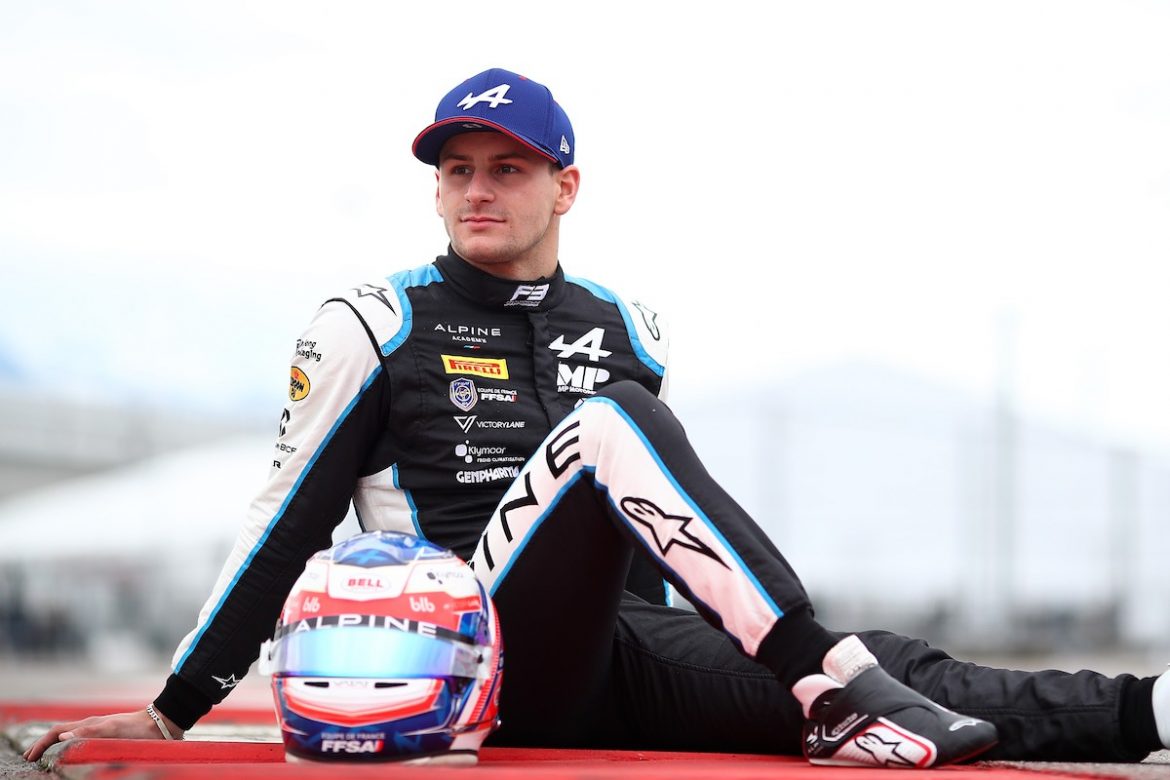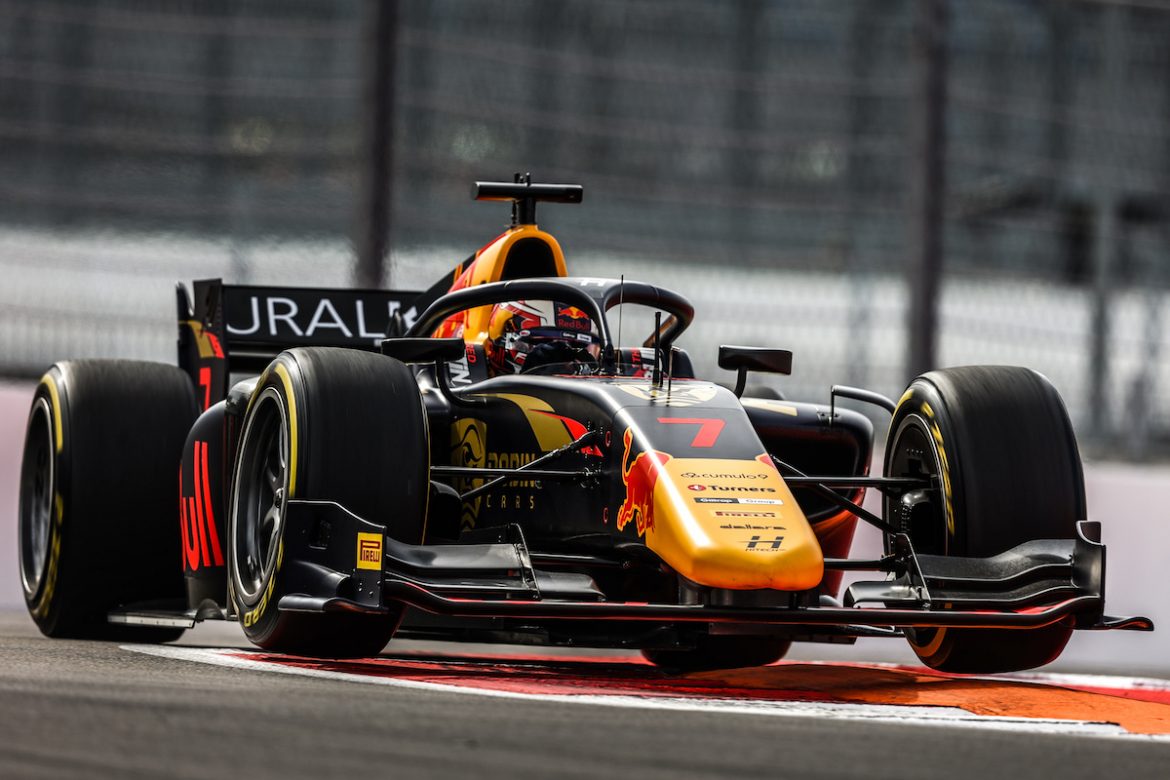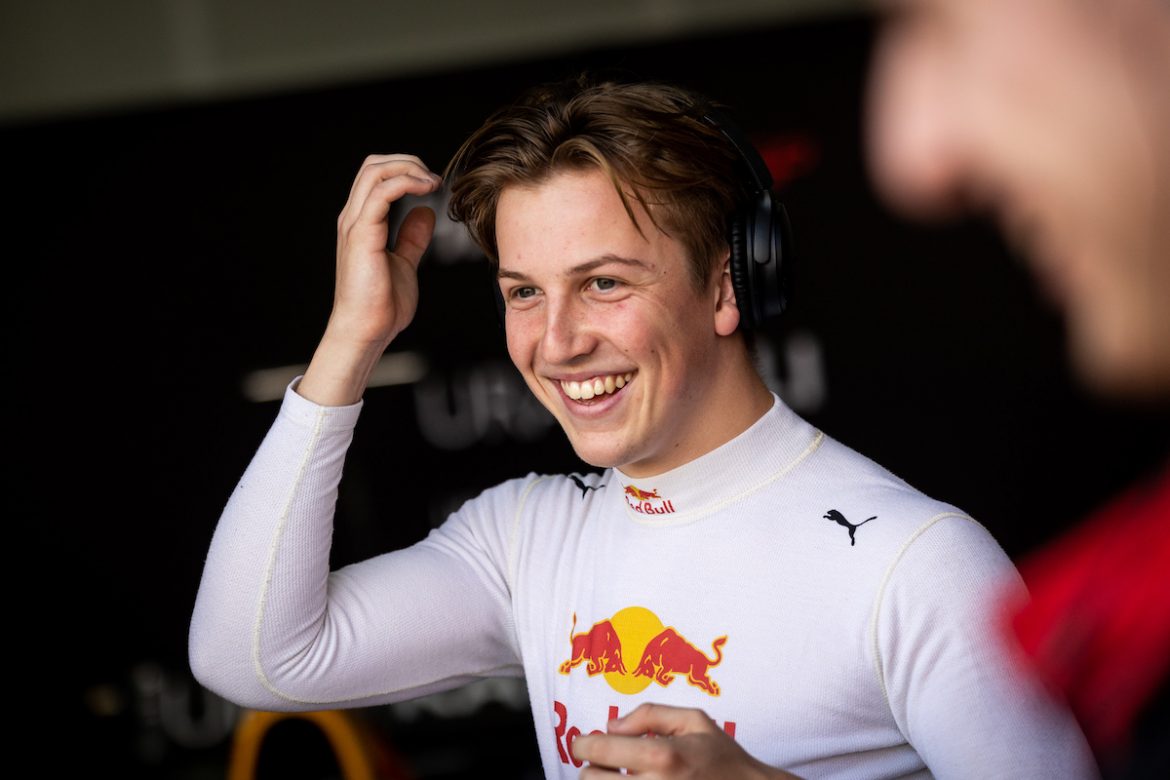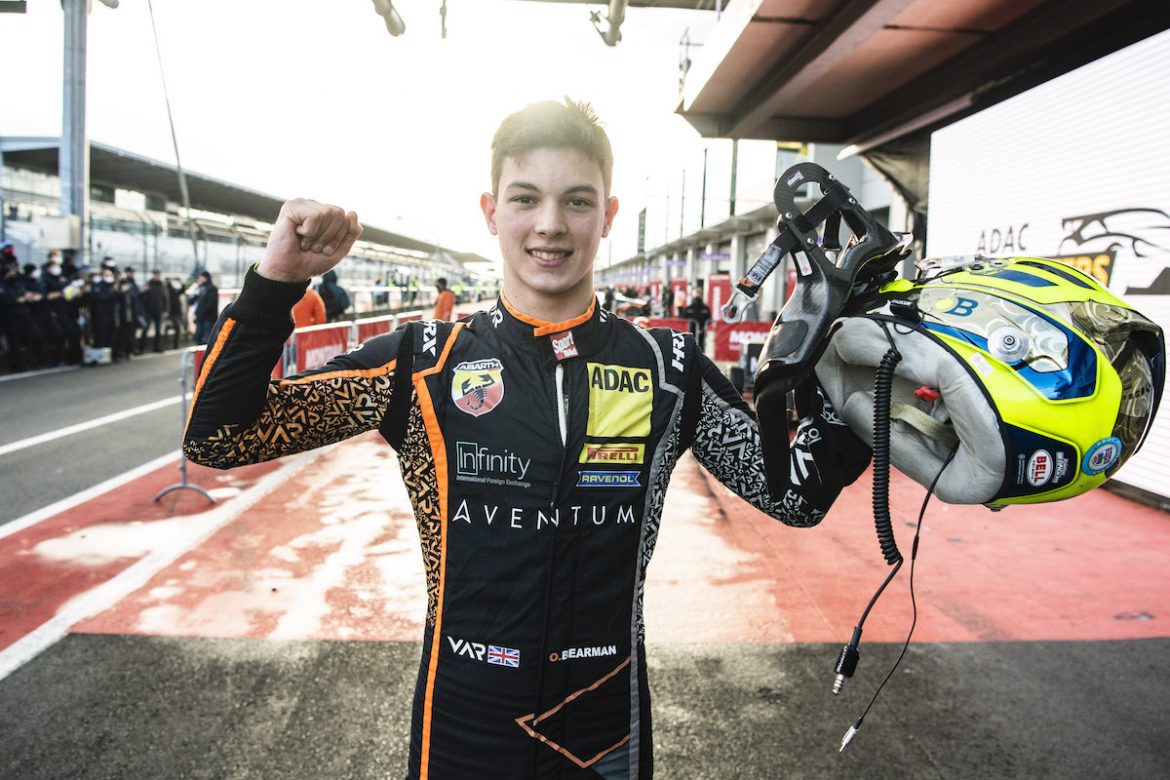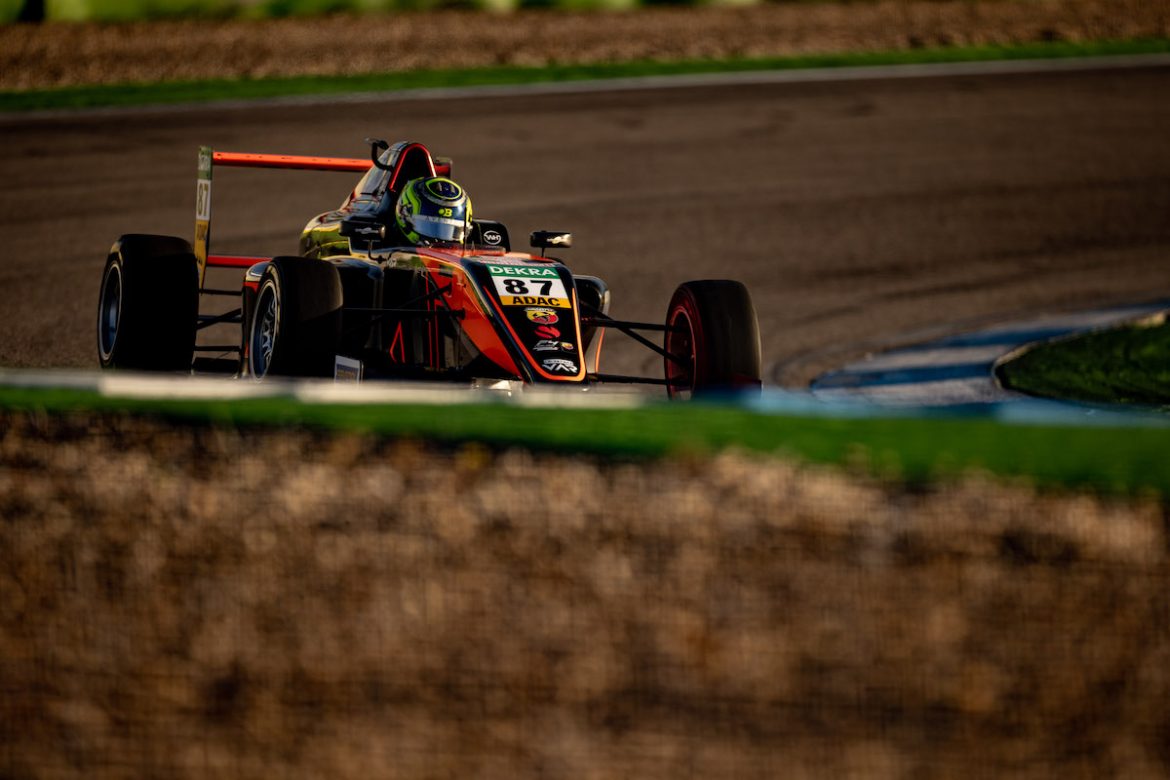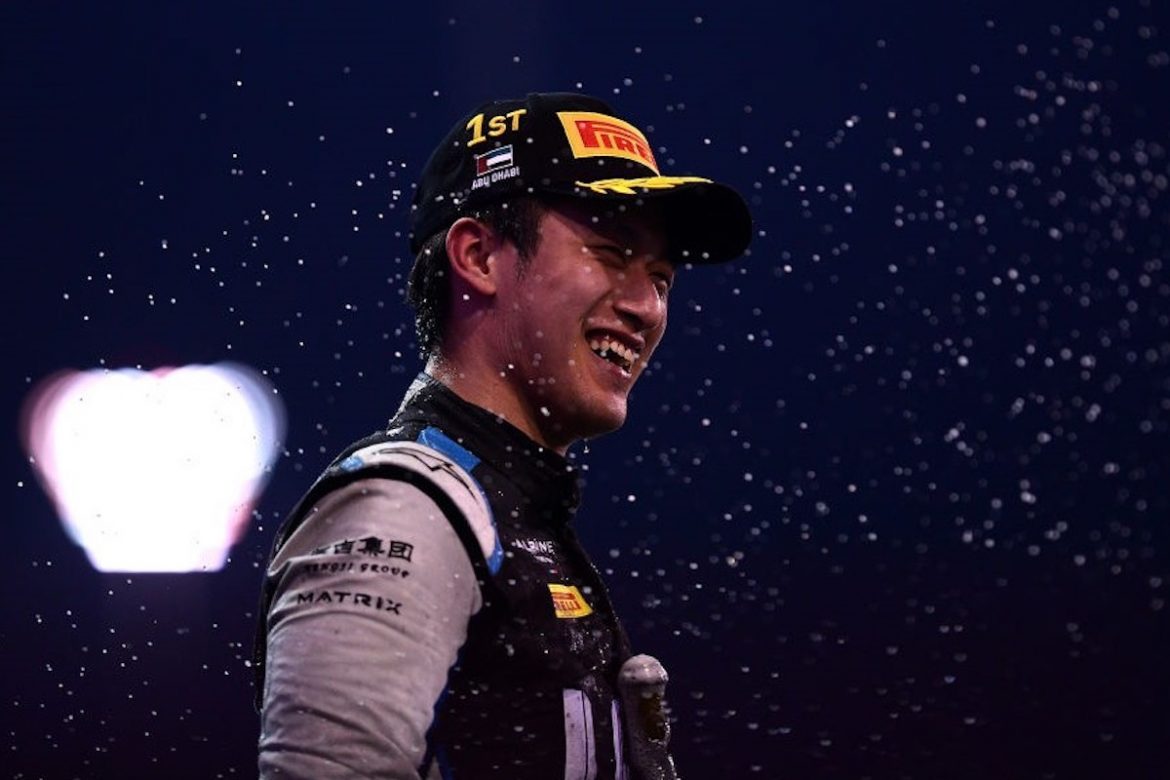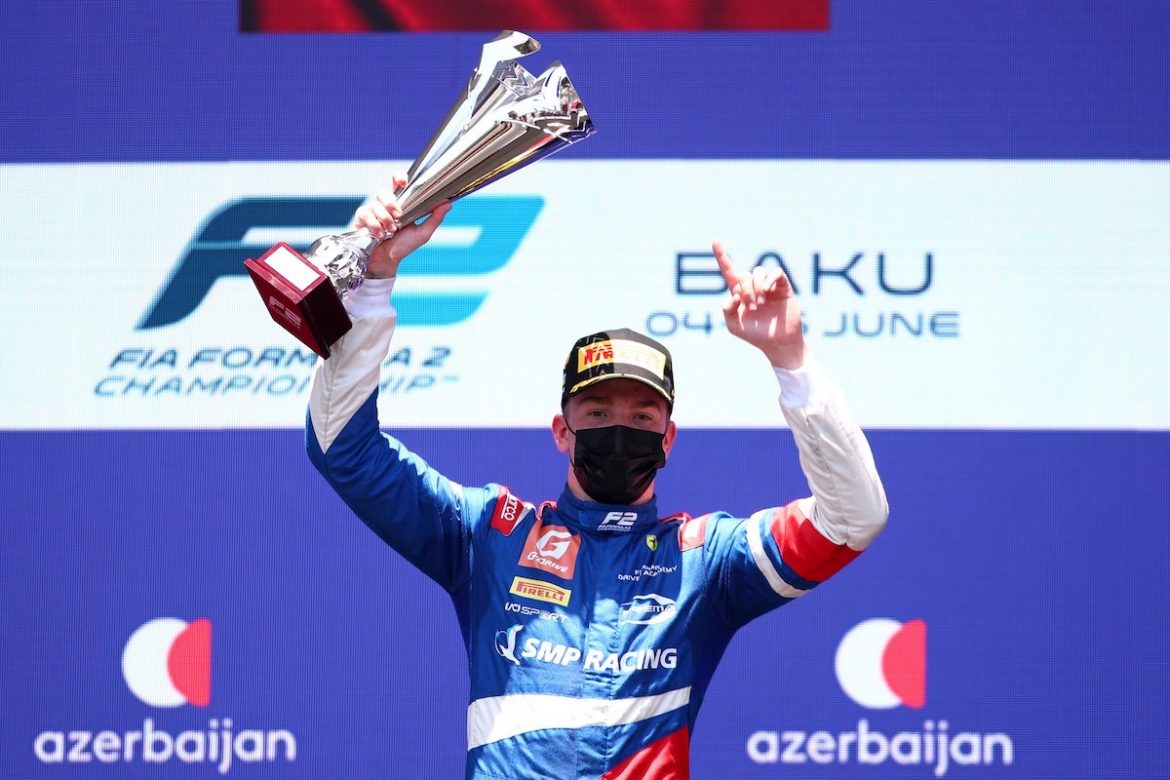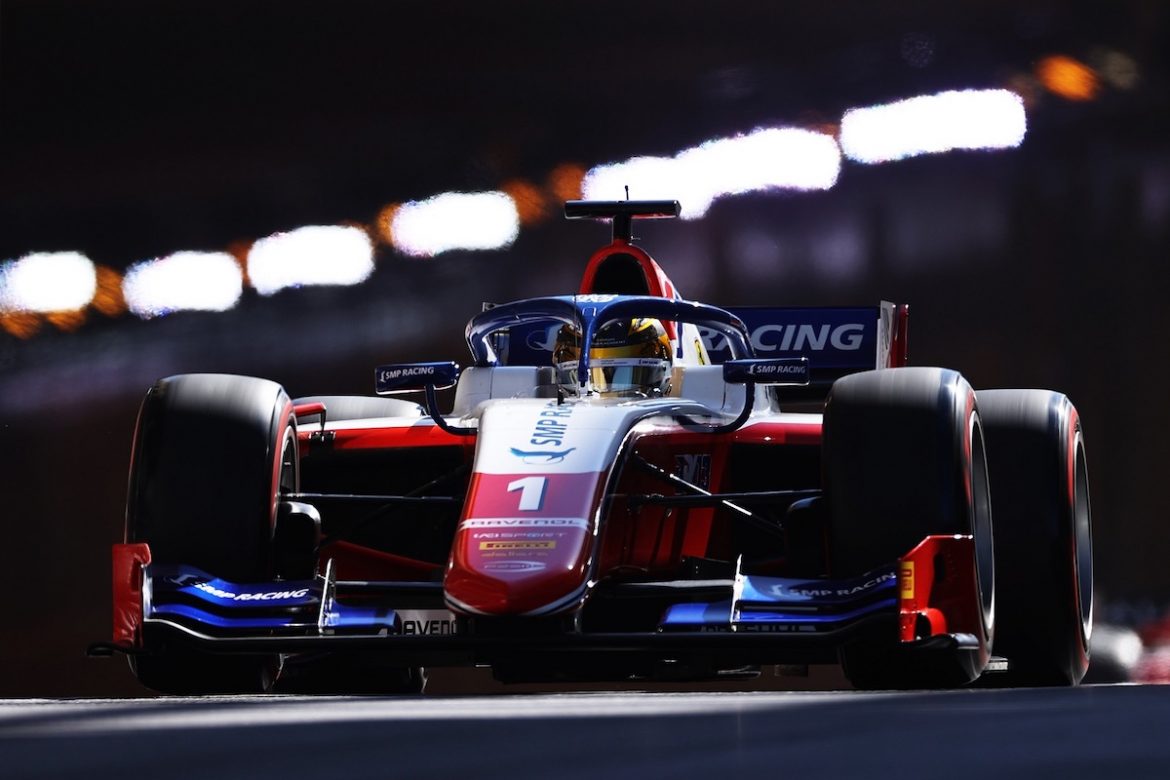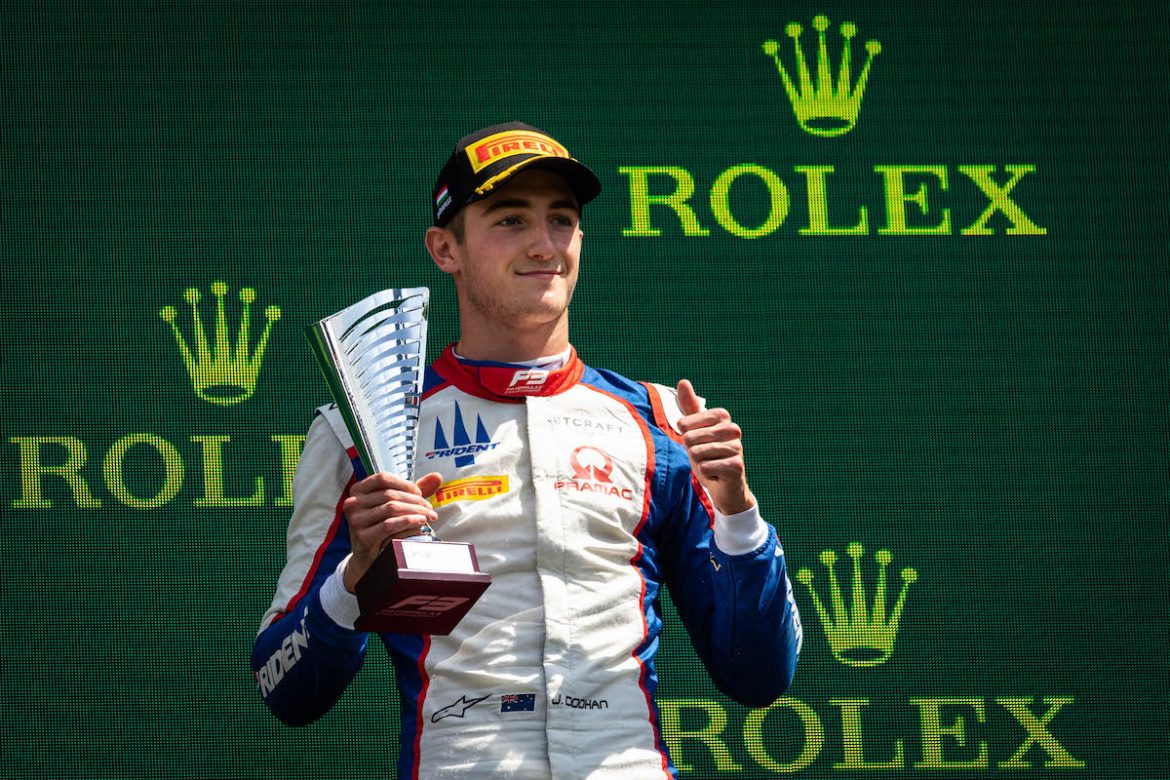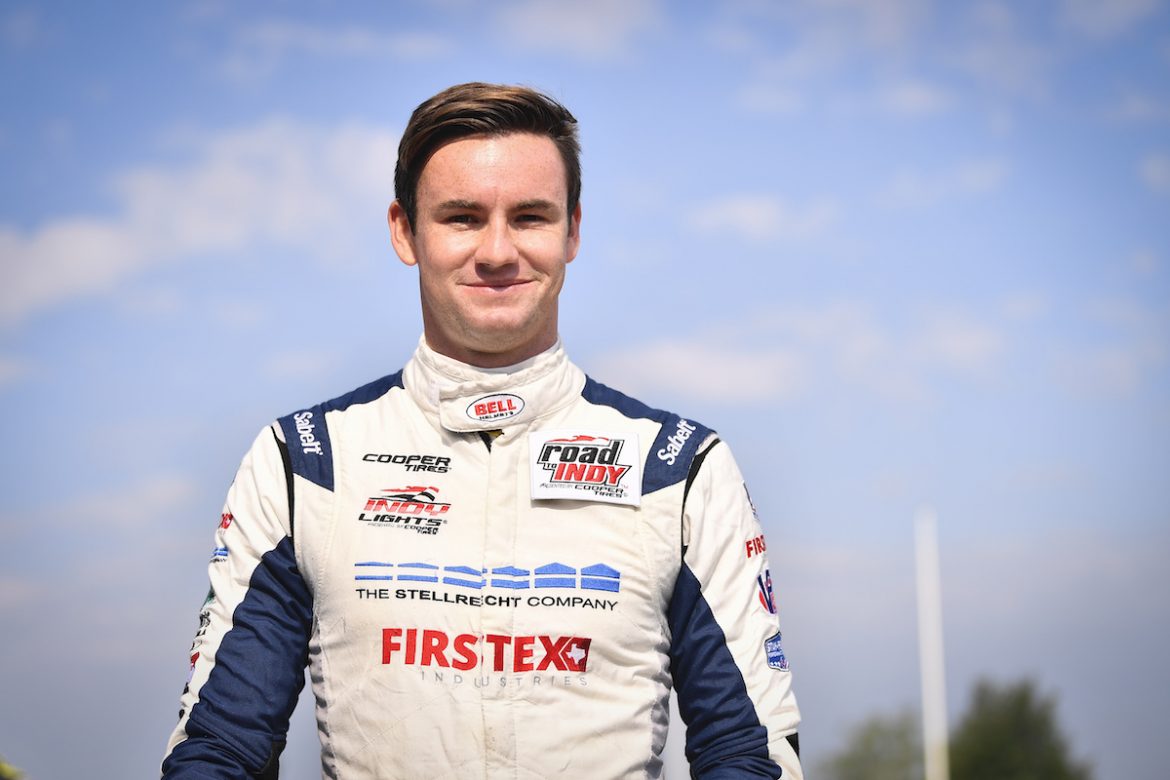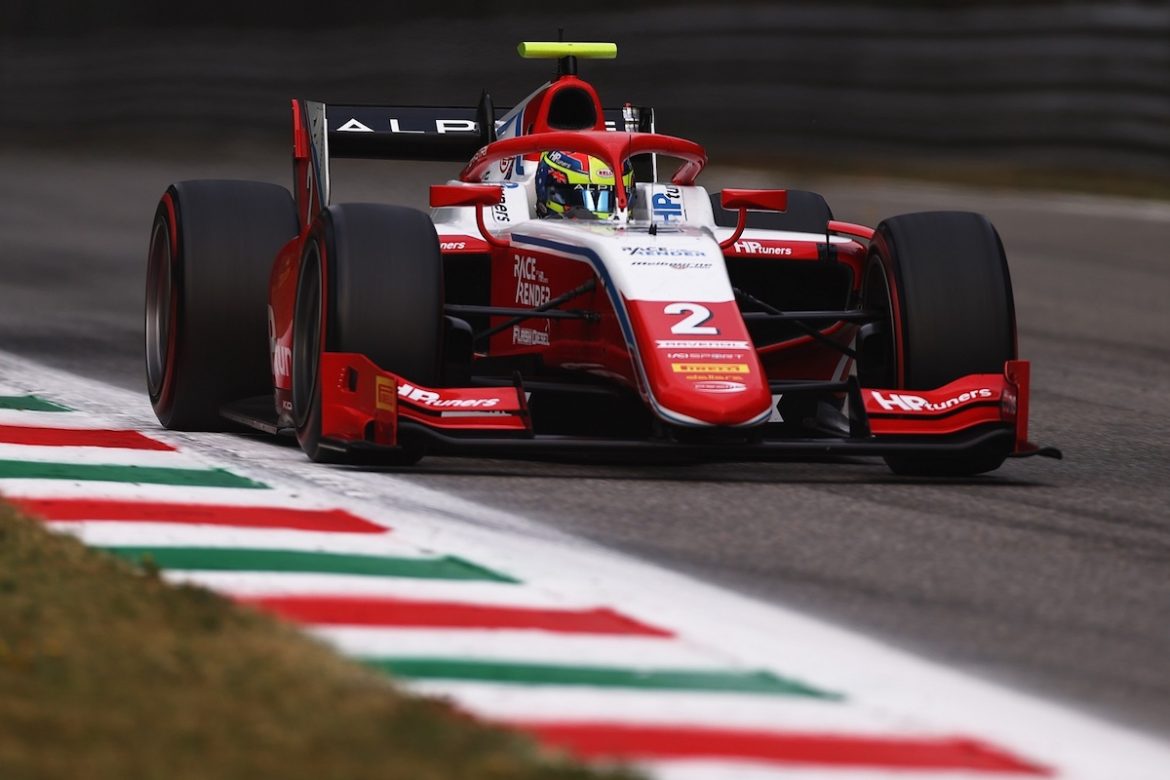Find out which drivers the Formula Scout team ranked as the most impressive in junior single-seater racing in 2021
10. Victor Martins
No change • F3’s top rookie and most spectacular racer
FIA Formula 3’s rookie of the year was a driver who gained a lot of popularity in 2021 with his racecraft, and as an Alpine junior showcased why he deserved to be back on that programme. It’s been a very decent year for Victor Martins.
How he and team-mate (and former title rival) Caio Collet would work as a team at MP Motorsport was a curious subplot to this season, but they proved to be a fine pairing. They helped bring the team forward, particularly after a mid-season slump, into regular podium contention and even to a race win in Martins’ hands.
It was the Frenchman who spearheaded that charge, and he certainly was the most complete of all the rookies this year. That was somewhat expected given his experience coming in, but was no guarantee given MP’s middling performances in the past. Without poor rounds at the Red Bull Ring and Hungaroring, he probably would have finished third in the points, ahead of rookies with better equipment and experienced drivers (some of whom also had better equipment).
He was the most exciting driver to watch in the reversed-grid races in particular, and his charge from fifth on the grid to finally win one at Zandvoort was spectacular, methodical and very well-managed. A very strong year once again.
9. Liam Lawson
Up 4 • Couldn’t replicate DTM title bid in F2 but was outstanding on his day
Despite dovetailing Formula 2 with DTM (the latter of which is not recognised in this ranking, but he was mega there either way and his title loss was a massive injustice), Lawson was absolutely one of the stars of the year and one of the most exciting drivers in the junior ranks.
He produced one of the overtakes on the year with an utterly outrageous lunge on eventual champion Oscar Piastri at Monaco’s Rascasse corner of all places in the wet, only to lose the win due to a technical infringement. That was a fine way to sum up the Red Bull junior’s F2 season, really. Audacious, rapid, not fully polished but also luckless all at the same time.
Winning on debut in fine fashion was his sole triumph of the year, and that he notched up just two further podiums doesn’t do justice to the speed that Lawson showcased this year. Hitech GP’s form ebbed and flowed quite wildly, and that could be seen in Lawson’s results. The one event the team was at its strongest – Baku – was a proper weekend-long scrap between he and team-mate Juri Vips. But his fellow Red Bull junior took the spoils in a rare weekend where he had luck for a change.
While his elbows out approach comes with its benefits and drawbacks, there is absolutely no denying that is is exhilarating to watch and once Lawson polishes off some of those rough edges further, he is going to be simply awesome wherever he ends up racing long-term and a serious 2022 F2 title threat should he return and have a bit more luck going his way. He was one of 2021’s stars whose results did not reflect his speed and talent.
8. Ollie Bearman
New entry • First driver to do the F4 double in Italy and Germany
In the space of under eight months, Bearman has taken 18 wins, become the first driver to win both the ADAC and Italian F4 titles in the same season, been selected to join the Ferrari Driver Academy and signed for Prema for his graduation to F3. And he may yet add the coveted Aston Martin Autosport BRDC Award to his packed trophy cabinet for the year.
Four wins in the opening two ADAC F4 rounds convinced him and his team, Van Amersfoort Racing, to contest the full season there in addition to the intended main campaign in Italy. From June to mid-September, he was virtually unstoppable, winning 14 times on track, although he lost one of his Imola triumphs after post-race scrutineering claimed to have found an engine irregularity.
He came under more pressure after the summer break, particularly in Germany where the pendulum swung back in Tim Tramnitz’s direction. Bearman held his nerve, closing out the title at the final round at the Nurburgring despite a scare in race one.
His huge points lead in Italy proved unassailable, not least as the remaining wins were shared between six drivers. With the title already in the bag, his performance at the season finale at Monza was sublime. That weekend highlighted his ability to deliver storming opening laps, to pull off aggressive but controlled passes and to deliver come rain or shine.
Somehow, he also found time in his crowded schedule to take in three rounds of the GB3 series in Britain, scoring one race win and outqualifying champion-to-be Zak O’Sullivan each time. The step from F4 direct to FIA F3 has proved a big hurdle for many top names (Theo Pourchaire being a notable exception) but Bearman graduates with historically the series’ leading team and could be a title contender in his rookie season.
7. Guanyu Zhou
Up 19 • Fought for F2 title and secured dream F1 drive
Most drivers on this list dream of Formula 1. Zhou has the unique distinction as the one to have achieved it. Others might have deserved it more, but Zhou’s performances during 2021 were absolutely crucial – alongside his commercial attractiveness – in convincing Frederic Vasseur and Alfa Romeo Racing that he was worthy of a seat. Rightly or wrongly, winning the Asian F3 title at the start of the year all-but secured his FIA superlicence, but he still had to ensure a forward trajectory in F2, which he did.
One can say Zhou was only doing what he should have been doing in his third season in F2. Actually, it’s arguably what he should have done in 2020 off the back of his fine rookie campaign the year before. But the nature of modern F2 makes that easier said than done – just look at Zhou’s Alpine Academy stablemate Christian Lundgaard, who was more fancied coming into the year – and especially so with the added curveball of the quirky 2021 format.
The pressure was on Zhou and he generally rose to it well, starting with victory in the Bahrain feature race from pole, while his triumph over Piastri at Silverstone was excellent. But sprint races made up two thirds of the season and Zhou was less impressive in these than his rivals, his progress out of the mid-pack less efficient and making costly errors like spinning on the first lap at Silverstone or even on his way to the grid in Sochi.
Even if a driver as near-perfect as Piastri didn’t exist and Zhou finished up closer to the championship, there would still be a few lingering doubts. But it was a decent step forward and enough for him to achieve his goal.
In many ways his three-year F2 stint replicated his three years in F3, with impressive speed out of the box as a rookie but a lack of convincing progress in results thereafter when the expectations increased, and perhaps this offers the biggest clue as to how he’ll get on in F1.
6. Robert Shwartzman
No change • Became F2 runner-up in his team-mate’s shadow
There were aspects of Shwartzman’s impressive rookie F2 campaign in 2020 that could have done with a bit of work for 2021. Qualifying in particular was the huge elephant in the room. He got there eventually, but it all came way too late to stop his Prema team-mate Piastri, who just kept improving.
It looked like he may have had it all figured out early on after in-season testing, topping his qualifying group in Monaco, but then it slipped away from him again until the final two rounds where he finally cracked it (while still missing that extra little bit to Piastri).
Those qualifying struggles did allow him to capitalise on the many sprint races, where he won twice and often looked most at home. But just two podiums (including the brief half-points race in Saudi Arabia) in feature races meant a serious title challenge was never on even if he finished in the top seven in each of them. That was simply never going to be enough in a season where one driver was smashing in podiums or wins in all bar one of the rounds.
Where Shwartzman was so strong, however, was in race pace. But his lowly qualifying positions left the Ferrari junior simply too much work to do. It was a disappointing return for the pre-season title favourite for many. He didn’t look entirely settled early on, but looked much more relaxed later in the year – which is when his performances became generally stronger and more complete. A very strong season in general, with his metronomic consistency serving him very well, but ultimately lacking that something special that he used to brilliant effect in FIA F3 to take the title there.
5. Jack Doohan
New entry • Battled for F3 title in breakthrough year
It’s fair to say that in another year, Doohan may well have been F3 champion rather than runner-up. He came into 2021 arguably as an outsider, joining Trident. A step up from his low-key maiden season was expected, but challenging Prema seemed like a dream.
But Doohan made that dream a reality. He was consistently quick, with the best qualifying average in the field, and was more than capable of turning those strong qualifying performances into results come race three when the biggest points were handed out.
However, the season was 20 races long, not seven. Doohan may well have been the best driver when taking into account the ‘traditional’ races, but he struggled to do battle in the reversed-grid races. This was where his championship challenge slipped away from him, as he frequently finished outside the points in the opening race of the the weekend. This was a season that rewarded not just being quick, but also racecraft, and that was where Doohan fell behind Dennis Hauger in the championship.
There should also be something said about Doohan’s F2 outings in the final races of the year. He was very quick straight out of the box and not afraid to get into the fight. He took two points finishes from six races, and joined Piastri on the front row in Abu Dhabi, giving us a taste of what could be to come next year when he links up with Virtuosi Racing.
4. Kyle Kirkwood
Re-entry (27th in ’19) • Completed perfect Road to Indy rise with Lights crown
Indy Lights had its strongest field in many years with two batches of Indy Pro 2000 graduates and Kirkwood was by far the standout of the lot. Andretti Autosport may not have had the strongest overall package this year, and yet Kirkwood still delivered the title that was expected before the aborted 2020 season.
These are just some of the reasons behind Kirkwood featuring considerably higher on this list than any Lights driver before him. It’s entirely justified as well. He was mighty consistent, won races he had no right in winning and produced one of the best passes of the year (a double outside sweep on David Malukas and Linus Lundqvist – the two next-best in the series this year) at Portland in one of the best drives of the year.
The latter point showcases why Kirkwood is so special, why he is a massive coup for the legendary A.J. Foyt and his eponymous IndyCar team and why every single team out there should be trying to get his signature for 2023.
Kirkwood won at Laguna Seca, in the dry, by a scarcely-believable 26 seconds. In a one-make series as strong as Lights was this year, he made the difference. There was no Andretti secret or anything like that, it was all him, and it left his rivals flabbergasted and the IndyCar world with an eyebrow well and truly raised.
He’s obliterated records, destroyed all in his path and concluded a remarkable junior career with a fantastic title despite seriously strong competition.
3. Dennis Hauger
Re-entry (21st in ’19) • F3 champion was a complete performer
Hauger produced one of the most emphatic returns to form across the junior ranks in 2021, bouncing back from a fairly miserable year to crush his rivals and continue Prema’s streak of FIA F3 drivers’ titles.
Even now, several months after the season, it’s a little unclear as to whether Prema was still dominant as in the past, or whether Trident closed right up or even overtook it in terms of performance. The likely scenario is that the form was circuit and condition-dependant but, irrespective of it, Hauger clearly was the driver of the year in F3.
The funky one-off format made it trickier in F3 than in F2 for a driver to dominate, with 12 drivers being flipped for the reversed-grid races, and Hauger made use of those races so much better than his opposition. He regularly made progress in those, often picking up useful and solid points, before repeating the process in the next race.
It was in one of those races, Austria race one, where he produced one of his best wins of the year. Starting 12th after claiming pole in qualifying, Hauger carved his way through the pack, waited for a collision between the leaders (as often seems the case at the Red Bull Ring), and stormed to victory in one of the best charges of the year.
His emphatic destruction of the opposition at Zandvoort in qualifying and the Sunday race, where he looked his most animated all year, was also superb to watch. His Red Bull Ring race three loss goes against him somewhat, but he picked up the points when it mattered. Despite the late charge by Trident, Hauger sealed the title with one race to spare. It was beautifully managed.
2. Theo Pourchaire
Up 2 • Proved potential in F2 beyond Monaco magnificence
Pourchaire’s pole and feature race win in Monaco wasn’t only one of the junior single-seater performances of the year but also in recent memory: on his debut at a track where skill and bravery always plays such a role when past experience is absent, in the second weekend of his first full F2 campaign, and aged just 17 years and 275 days – making him the youngest ever winner at that level.
It couldn’t possibly be dismissed as a fluke, but neither does one weekend make a year. But Pourchaire showed his precocious ability at plenty of other times, even though the calendar provided a limited number of different opportunities to show off.
He was the third-best qualifier on average, very close behind Zhou, and second only to Piastri on actual one-lap pace. After his pole in Monaco, he qualified fourth in Baku and third in Sochi, where he chased Piastri home in the feature race – finishing within two seconds of the eventual champion.
At that point he looked like the only guy in Piastri’s league, and was perhaps still a title contender if he could keep up such form. He would qualify third again in Jeddah, only to stall at the start (he’s far from the first to stall an F2 car, and was unlucky to be hit so hard). He could be forgiven for ‘only’ qualifying sixth when he got back in the car just five days later, and he still raced decently to fourth.
His feature race points haul was fourth-best (or third-best discounting the Jeddah race that lasted just five laps). A low sprint race tally cost him in the overall standings, but he rarely benefitted from the reversed grid because he usually qualified high up and finished relatively far forward in race one. Only Shwartzman and Piastri made up more points from their starting positions in these races, and he won from fourth at Monza.
Overall, Pourchaire was undoubtedly eclipsed in his achievements as a rookie by Piastri, but was very inexperienced to be performing at this level, in only his fourth year of car racing and second out of F4. There’s also over two years in age between the pair, and it does show.
For that reason, Vasseur is correct to say his protege is not ready for F1. He needs to show more maturity inside and outside of the car, and manage a title bid at this level with all the pressure and expectation that comes with it. And that is certainly not a given in the complex world of F2. But he’ll start as the favourite in 2022 given how good he already looked this year.
1. Oscar Piastri
Up 4 • Became peerless to win the F2 crown at the first attempt
Piastri came into F2 having won back-to-back titles in Formula Regional and F3, but there was little evidence from the way he won the latter in particular to make him a title favourite in the way previous F2 rookies like Charles Leclerc or George Russell had been. In the end, his 2021 triumph became easily the most impressive of the lot such was the way he improved over the campaign to stand head-and-shoulders above his competition.
It was the racecraft that served Piastri so well in F3 that had him right in contention from the opening round, making the most of the sprint race-heavy format to take away as many points as possible from each weekend. He knew where to prioritise that point-scoring where necessary, but that didn’t mean that he was tame in wheel-to-wheel battle. Tangle with Dan Ticktum in the Bahrain feature race aside, he knew when to pick his battles. That he got taken out when he increased the risk factor in his first race after winning the title simply proved how expertly he had been managing that when it mattered before.
Qualifying had been the big concern at the start of the year given his lack of front-row starts in F3 and Prema’s own one-lap struggles in F2 in 2020. But this became the focus of the in-season test at Barcelona and the results were immediately evident for Piastri while Shwartzman continued to struggle on conventional tracks in the middle of the year.
Piastri couldn’t convert his first pole at Silverstone, but he was never beaten again in qualifying over the rest of the year and never to the chequered flag in feature races either. By the end of the year, Prema looked unbeatable in qualifying and race trim with both cars once more, and it was Piastri that made full use of this rather than his undoubtedly talented team-mate.
The ill-thought-out F2 calendar meant Piastri’s full potential was only realised once every seat on the F1 grid had already been filled. It’s not simply the back-to-back-to-back titles that should entitle him to a drive: his full package of outright speed, sublime racecraft and calm maturity should have him near the top of any team’s shopping list regardless of experience. It’s not easy to see where the chance might come in 2023, but something is badly wrong if it doesn’t.
The Formula Scout Top 50 Drivers of 2021 has been compiled by Alejandro Alonso Lopez, Bethonie Waring, Cian Brittle, Craig Woollard, Ida Wood, Peter Allen and Roger Gascoigne. Click here to view the rest of the list.
You can listen to our podcast debating how we came to determine the top 50 order, as well as our big review of the year, below. The podcast can also be found on Breaker, Google Podcasts, Overcast, Pocket Casts, RadioPublic, Castbox, Apple Podcasts and Spotify.
